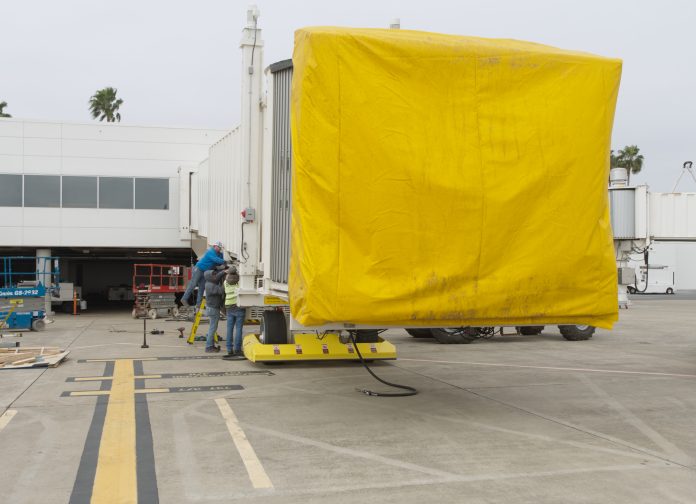
HARLINGEN — If you build it, they will fly it.
Contract workers from JBT Jetway of Ogden, Utah, are installing two new jet bridges, the million-dollar, high-tech tunnels used by passengers going on and coming off a plane.
Valley International Airport last added a jet bridge, No. 6, in 2019. Two are being installed now, with one being an addition, and the other replacing an older bridge. Once finished, seven jet bridges will be available for use by passengers at VIA.
“They are million bucks apiece. They are custom-made to each airport and each aircraft envelope parking space,” said Bryan Wren, assistant director of aviation at VIA. “We’re actually removing two and relocating it so that we can put in Gate 3, which has never been in this building. When these two are finished and installed in mid-January, we’ll be removing and replacing Gate 5.”
“It’s important because it allows all the air carriers that we serve, each air carrier can have its own gate, for the multiple times a day they fly in and out of here,” he added.
Potentially, nearly 2,000 passengers could use a single jet bridge each day, said Nico Mirman, director of air service and business development at the airport.
“At Dallas Love Field, we have restrictions on how many flights they can have in total,” Mirman said. “Southwest usually uses it for 10 flights a day. So if you take 175 seats per flight, which is what we have in the largest plane, and multiply by ten, you get 1,750.”
Before jet bridges, or jetways, were introduced in the late 1950s, airline passengers would trudge out onto the runway and climb steep metal ladders to board and then use similar ladders to exit a commercial plane.
Jet bridges were introduced to protect passengers from the elements, as well as allow less-nimble passengers to easily board a plane.
Today, they also serve to assure security measures instituted by the Transportation Security Administration are met.
“It keeps the passengers out of the weather and gives them a safe passage from the terminal to the plane, and it also is secure so its meets all the TSA requirements,” Wren said. “They can’t intermingle with the ground crews. They go straight from boarding pass scanning into the plane.”
The bridges being replaced are all about 30 years old, close to the maximum life span, even with proper maintenance.
“We have a very good preventative maintenance program on our bridges,” Wren said, adding they are inspected quarterly and get an overhaul once a year. “Down here in South Texas, you have to stay on top of that, or they won’t last 10 years.”
Too much sun? Too much heat?
“Salt air is the worst — salty air,” Wren said. “We do see our fair share of it, and it is something that we are constantly fighting and maintaining. Kudos to our maintenance crews. They do a good job.”
Once the installation of the new bridges is complete, the oldest of the remaining bridges has been in service since 2015.
Funding for the jet bridges came from the Federal Aviation Administration as part of $2.89 billion in federal monies from the Airport Infrastructure Grant Program.



